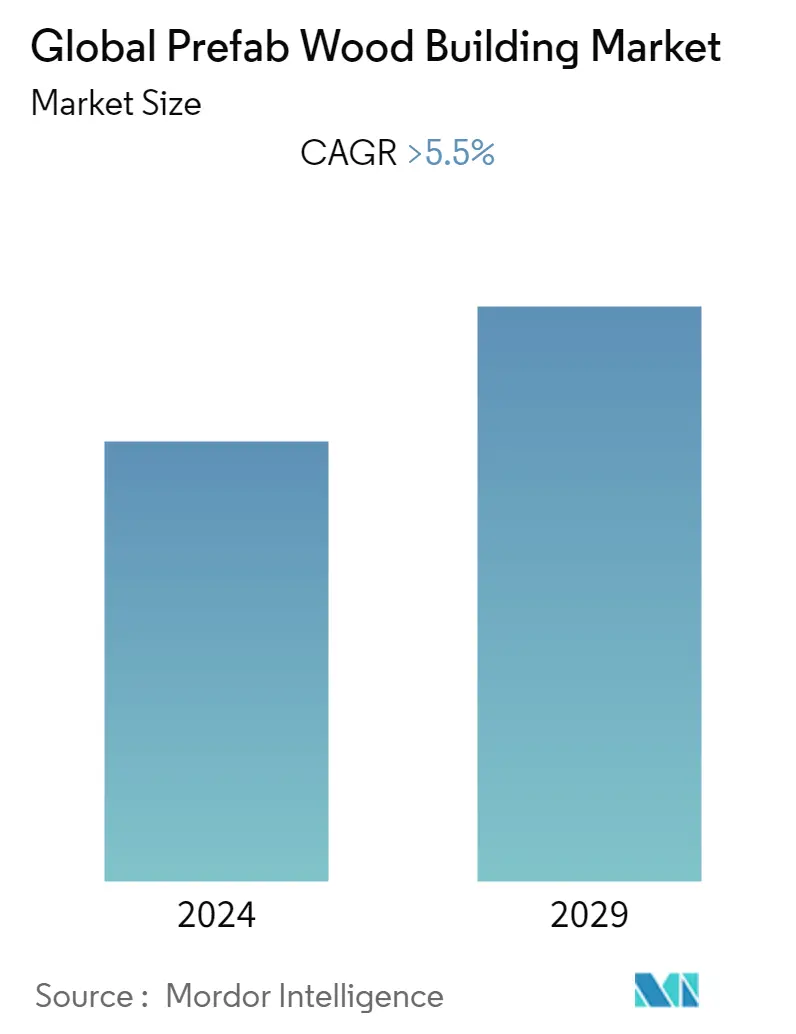Market Size of Global Prefab Wood Building Industry

| Study Period | 2019-2028 |
| Base Year For Estimation | 2022 |
| CAGR | > 5.50 % |
| Fastest Growing Market | Asia-Pacific |
| Largest Market | North America |
| Market Concentration | Low |
Major Players
*Disclaimer: Major Players sorted in no particular order |
Need a report that reflects how COVID-19 has impacted this market and its growth?
Prefab Wood Building Market Analysis
The size of Prefab Wood Building Market is USD 33.6 billion in the current year and is anticipated to register a CAGR of over 5.5% during the forecast period.
- Prefabricated wooden buildings are among the quickest and easiest to construct, and architects in India are increasingly exploring post and beam, glued-laminated timbers. As a carbon-neutral building material, wood offers several advantages to its users as well as the environment.
- With increasing technology and cutting-edge engineering, it is feasible to express every unique aesthetic experiment, allowing big structures to be built in wood, such as 16-story buildings, curved forms, Olympic-size roof spans, and earthquake-sensitive structures. Canadian Wood is sourced from sustainably managed forests in British Columbia (B.C.) and is one of the most dependable providers of wooden items in the Indian market. Spruce-Pine-Fir (SPF), Douglas-fir, Western Hemlock, Western Red Cedar, and Yellow Cedar are all excellent choices for making any idea a reality.
- Aside from increased demand for prefabricated conventional homes, log homes were a big and rising component of the business. In the late 1990s, log homes accounted for about 7% of all bespoke homes built in the United States; exports of prefabricated log homes also surged. Log dwellings, like modular homes, grew increasingly affluent. Because they consume more wood than typical constructed housing 10 to 20% more the wood preferred for their construction is becoming increasingly scarce.
- Engineered joists, columns, and wall and floor components made of wood provide improved strength while remaining lightweight. These wood-based goods are lighter, which simplifies transportation and increases recyclability, which is projected to increase demand for prefab wooden houses. To accommodate demand, some manufacturers have turned to alternative woods, notably abundant pine. Furthermore, government programs such as "Housing for All" and "One Belt, One Road" are thriving in the residential and commercial building sectors, which is expected to play a significant role in boosting the prefabricated building systems market throughout the projected period.
